Chapter: 12th Physics : Electromagnetic Induction and Alternating Current
Advantages of AC in long distance power transmission
Advantages of AC in long distance power
transmission
Electric power is
produced in a large scale at electric power stations with the help of AC
generators. These power stations are classified based on the type of fuel used
as thermal, hydro electric and nuclear power stations. Most of these stations
are located at remote places. Hence the
electric power generated is transmitted over long distances through
transmission lines to reach towns or cities where it is actually consumed. This
process is called power transmission.
But there is a
difficulty during power transmission. A sizable fraction of electric power is
lost due to Joule heating (i 2 R) in the transmission
lines which are hundreds of kilometer long. This power loss can be tackled
either by reducing current i or by reducing resistance R of the
transmission lines. The resistance R can be reduced with thick wires of
copper or aluminium. But this increases the cost of production of transmission
lines and other related expenses. So this way of reducing power loss is not
economically viable.
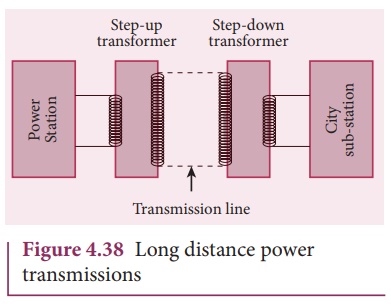
Since power produced is
alternating in nature, there is a way out. The most important property of
alternating voltage that it can be stepped up and stepped down by using
transformers could be exploited in reducing current and thereby reducing power
losses to a greater extent.![]()
![]()
At the transmitting
point, the voltage is increased and the corresponding current is decreased by
using step-up transformer (Figure 4.38). Then it is transmitted through
transmission lines. This reduced current at high voltage reaches the
destination without any appreciable loss. At the receiving point, the voltage
is decreased and the current is increased to appropriate values by using
step-down transformer and then it is given to consumers. Thus power
transmission is done efficiently and economically.
Illustration:
An electric power of 2
MW is transmitted to a place through transmission lines of total resistance, say
R = 40 Ω, at two different voltages. One is lower voltage (10 kV) and
the other is higher (100 kV). Let us now calculate and compare power losses in
these two cases.
Case (i):
P = 2 MW; R = 40 Ω;
V = 10 kV
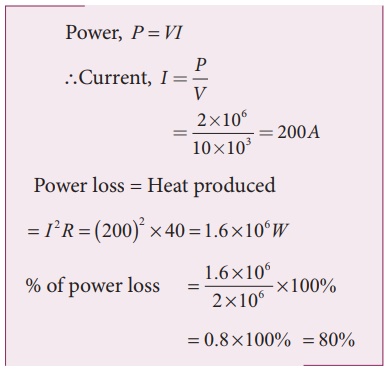
Case (ii):
P = 2 MW; R = 40 Ω;
V = 100 kV
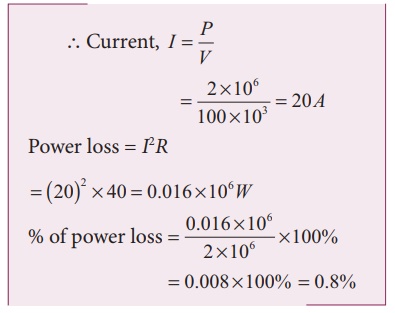
Thus it is clear that
when an electric power is transmitted at higher voltage, the power loss is
reduced to a large extent.
EXAMPLE 4.16
An ideal transformer has
460 and 40,000 turns in the primary and secondary coils respectively. Find the
voltage developed per turn of the secondary if the transformer is connected to
a 230 V AC mains. The secondaryisgiventoaloadofresistance104Ω. Calculate the
power delivered to the load.
Solution
NP = 460
turns; NS = 40,000 turns
VP = 230 V; RS
= 104 Ω
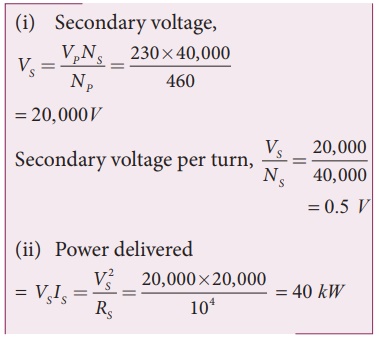
EXAMPLE 4.17
An inverter is common
electrical device which we use in our homes. When there is no power in our
house, inverter gives AC power to run a few electronic appliances like fan or
light. An inverter has inbuilt step-up transformer which converts 12 V AC to
240 V AC. The primary coil has 100 turns and the inverter delivers 50 mA to the
external circuit. Find the number of turns in the secondary and the primary
current.
Solution
Vp = 12 V; Vs = 240 V
Is = 50mA; Np = 100
turns
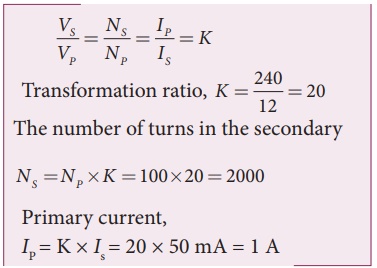
Related Topics